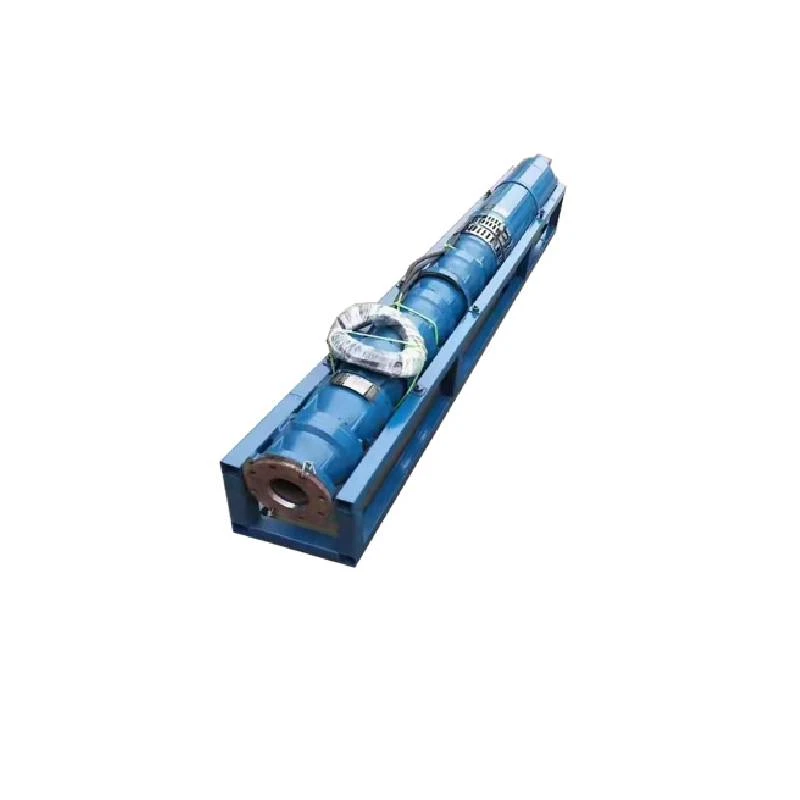Nov . 01, 2024 16:51 Back to list
Underwater Motor Pump Technologies for Efficient Water Management Solutions
Underwater Pump Motors An Essential Component in Modern Pumping Systems
Underwater pump motors play a crucial role in various applications, especially in industries such as agriculture, municipal water supply, and aquaculture. These motors are specially designed to operate underwater, providing efficient and reliable performance for a range of pumping tasks. While they may seem like straightforward devices, the technology and engineering behind underwater pump motors are quite sophisticated.
One of the primary functions of an underwater pump motor is to drive the impeller, which is responsible for moving water or other fluids. These motors are typically submersible, meaning they can be completely submerged in the liquid they are pumping without compromising functionality or safety. This characteristic allows for less space-consuming setups and reduces the need for long suction pipes, which are often prone to air leaks and cavitation issues.
The design of underwater pump motors involves several key considerations. First, the materials must be resistant to corrosion from water, especially when dealing with saline or chemical-laden fluids. Stainless steel, bronze, and specially coated materials are commonly used to enhance durability and longevity. Additionally, the motors need to be hermetically sealed to prevent water from entering the electrical components, which could lead to short circuits and failures.
underwater pump motor

Efficiency is another critical aspect of underwater pump motors. The hydrodynamics involved in pumping submerged fluids are complex, and engineers strive to optimize motor performance to ensure maximum output with minimal energy consumption. Advanced designs can incorporate variable frequency drives, which allow for better control over pump speed and capacity. This adaptability is particularly advantageous in applications where fluid demand fluctuates, leading to more sustainable operations.
Maintenance of underwater pump motors can be challenging due to their submerged location; however, regular inspections and maintenance protocols can alleviate potential issues. For instance, monitoring vibration and temperature can help detect problems early and prevent costly downtime. Furthermore, advancements in remote monitoring technology have enabled operators to keep track of motor performance in real time, reducing the need for frequent manual checks.
In conclusion, underwater pump motors are indispensable in various sectors that require efficient and reliable fluid management. Their ability to operate in submerged conditions without sacrificing performance makes them an excellent choice for many applications. As technology continues to evolve, we can expect even more efficient and durable designs, further enhancing the utility of underwater pumps in our ever-demanding world. Whether for agricultural irrigation, municipal water systems, or industrial processes, these motors will continue to play a vital role in ensuring effective fluid transportation.
-
Submersible Water Pump: The Efficient 'Power Pioneer' of the Underwater World
NewsJul.01,2025
-
Submersible Pond Pump: The Hidden Guardian of Water Landscape Ecology
NewsJul.01,2025
-
Stainless Well Pump: A Reliable and Durable Pumping Main Force
NewsJul.01,2025
-
Stainless Steel Submersible Pump: An Efficient and Versatile Tool for Underwater Operations
NewsJul.01,2025
-
Deep Well Submersible Pump: An Efficient 'Sucker' of Groundwater Sources
NewsJul.01,2025
-
Deep Water Well Pump: An Efficient 'Sucker' of Groundwater Sources
NewsJul.01,2025
-
 Submersible Water Pump: The Efficient 'Power Pioneer' of the Underwater WorldIn the field of hydraulic equipment, the Submersible Water Pump has become the core equipment for underwater operations and water resource transportation due to its unique design and excellent performance.Detail
Submersible Water Pump: The Efficient 'Power Pioneer' of the Underwater WorldIn the field of hydraulic equipment, the Submersible Water Pump has become the core equipment for underwater operations and water resource transportation due to its unique design and excellent performance.Detail -
 Submersible Pond Pump: The Hidden Guardian of Water Landscape EcologyIn courtyard landscapes, ecological ponds, and even small-scale water conservancy projects, there is a silent yet indispensable equipment - the Submersible Pond Pump.Detail
Submersible Pond Pump: The Hidden Guardian of Water Landscape EcologyIn courtyard landscapes, ecological ponds, and even small-scale water conservancy projects, there is a silent yet indispensable equipment - the Submersible Pond Pump.Detail -
 Stainless Well Pump: A Reliable and Durable Pumping Main ForceIn the field of water resource transportation, Stainless Well Pump has become the core equipment for various pumping scenarios with its excellent performance and reliable quality.Detail
Stainless Well Pump: A Reliable and Durable Pumping Main ForceIn the field of water resource transportation, Stainless Well Pump has become the core equipment for various pumping scenarios with its excellent performance and reliable quality.Detail
